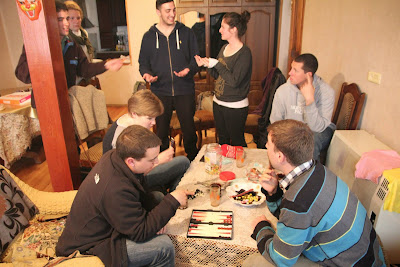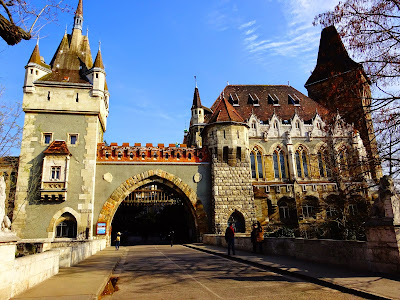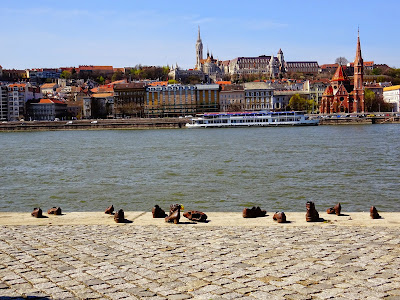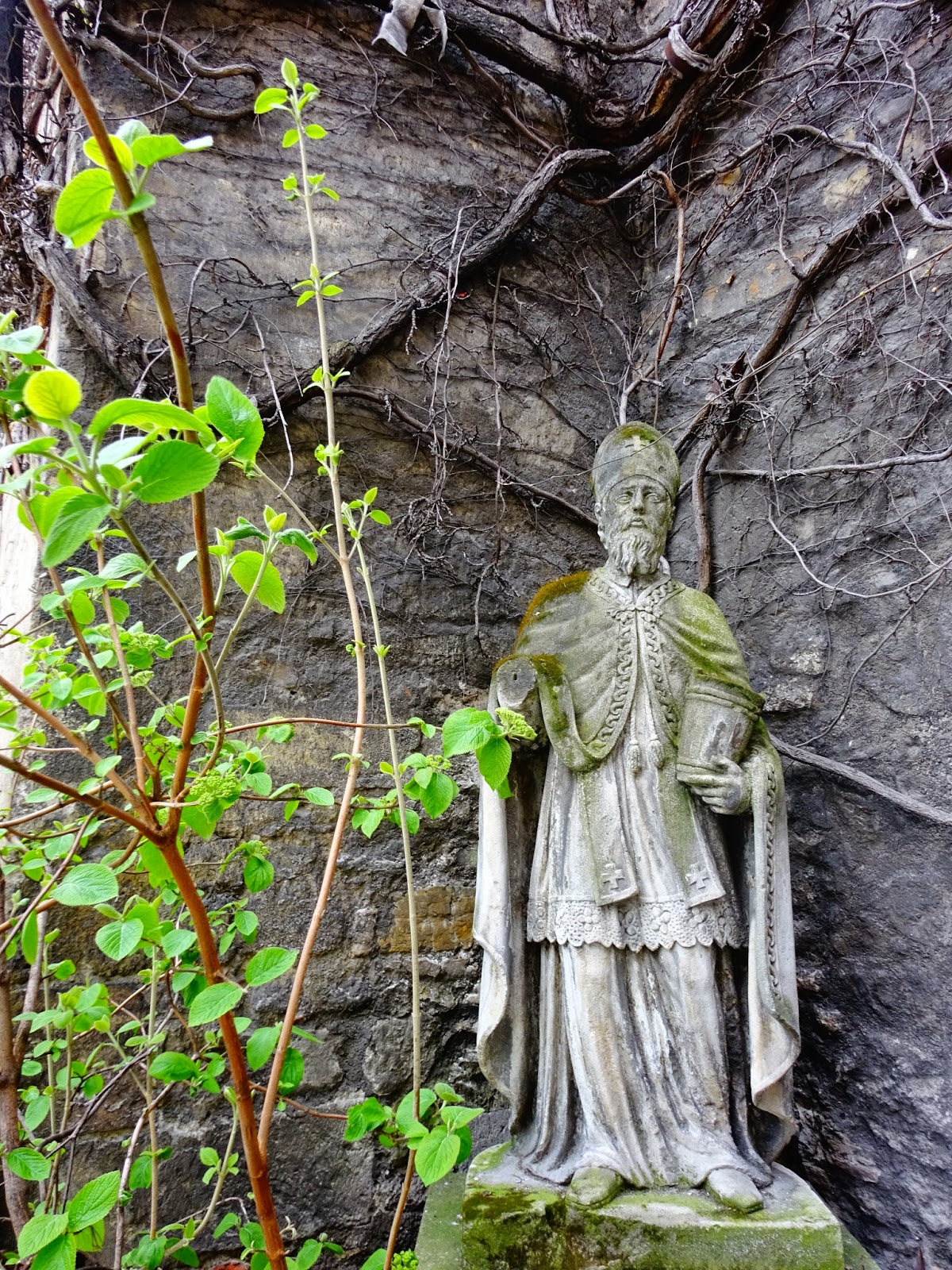As of April 29 I've officially been in Georgia for one year! Crazy. The days are long but the years are short. A fresh batch of volunteers (G15s) arrived in country on April 20 and now all of a sudden I'm one of those seasoned veterans I used to look to for advice when I first arrived. It's certainly been a wild year, and I can't wait to see what the rest of my service has in store. Big shout out to everyone who's contributed to what has been an incredible experience!
Let's backtrack a bit to March and take it from there...
In early March I held my first debate club meeting, which is for high school students only. About 30 students
showed up and my director helped translate. The main goal is to have a lively
debate club, but I first want to teach my students about good and bad
arguments, i.e. logic. I started off with some very basic formal logic in the
form of if-then statements. I gave them examples and asked them to talk about
why those examples were or were not valid, such as “If Keti is at school, then
Giorgi is at school. Keti is not at school. Therefore, Giorgi is not at
school.” I showed them how this argument can be symbolized as:
K ⊃
G
˜K
∴ ˜G
This argument is
an example of the fallacy of denying the antecedent. We also looked at the
fallacy of affirming the consequent, which has the form:
K ⊃
G
G
∴ K
Examining these
two fallacious argument forms allowed us to then discuss the difference between
necessary and sufficient conditions, the latter always being the antecedent of
the former in an if-then statement. For example, in the proposition “if Giorgi
is a bachelor, then he is male,” the condition of being male is necessary for Giorgi
to be a bachelor. The condition of being unmarried is also necessary for Girogi
to be a bachelor, so we can say, “if Giorgi is a bachelor, then he is
unmarried.” On the other hand, the condition of being a bachelor is sufficient for us
to conclude that Giorgi is both male and unmarried.
I hope you
enjoyed that little foray into formal logic as much as I did! My students, though, seemed to prefer the informal logic we discussed next. Informal logic
analyzes the arguments that occur in our everyday conversations, and those
arguments usually can’t be put into symbolic form. We looked at two informal
fallacies - Ad Hominem and Post Hoc arguments.
Ad Hominem
arguments attack the individual’s character rather than the individual’s
argument, and Post Hoc arguments follow the general form of, “A happened before
B, so A must have caused B.” I asked my students to come up with examples and
we all had a good laugh when one of my 9th graders said, “I married my
girlfriend and now my life is much worse” as an example of a Post Hoc argument.
We've now had a couple more meetings since the first and I think the students are becoming more comfortable with the kind of material we're covering as well as with putting forth their own views. We had a discussion about gun control at our last meeting, and our next meeting will focus on religion in schools.
On Saturday, March 14 I
attended my first rugby match, which happened to be between the Georgian and
Russian national teams. Tickets were super cheap (3 lari each, or about $1.50)
so a bunch of volunteers and I went to the game. We had a great time cheering
on Georgia, and they kicked Russia’s butt 33-0. For a country with less than 5
million people, Georgia has a pretty strong rugby team. Hopefully I can get to
another game or two before my service is over.
Mikheil Meskhi Stadium
The next weekend
I visited the town of Sighnaghi. Situated in the famous wine region of Kakheti, the town and surrounding fortress walls were built in 1762 at the
behest of King Erekle II, but the Georgian government recently helped fund a
major renovation and reconstruction of the town to increase tourism.
 |
| Sighnaghi overlooking the Alazani Valley and the Greater Caucasus |
 |
| On the fortress walls |
 |
| St. George's Church |
We stopped by
the local museum, which is named after the famous folk artist Pirosmani. On the
first floor there are artifacts from the Kakheti region dating back to the
early 2nd millennium, and the second floor houses paintings by
Pirosmani and another artist, Gudiashvili.
 |
| Figurines, jewelry, weapons, etc... |
About a mile
from the town is the Monastery of St. Nino at Bodbe, which was originally
constructed in the 9th century and underwent renovation in the 17th
century. The monastery is a nunnery and a major pilgrimage site in Georgia. St.
Nino’s body and relics are at Bodbe, as well as St. Nino’s spring, which is
supposed to have healing powers.
 |
We stayed at a
family’s house in Sighnaghi and they were incredibly nice. The owner is the
former head of Sighnaghi’s region’s police and seems to know everyone in
Georgia, including the owners of the restaurant Tbilisi in NYC. He was kind
enough to drive us around in the rain, gift us a liter of his wine, and provide
us with chacha shots at breakfast.
 |
| Modeling some traditional Georgian garb |
When I returned to site from Sighnaghi I experienced my first Georgian funeral. The grandfather of one of my
12th graders had recently passed away, and the funeral started with
everyone gathering in the street outside of his house. An hour and 200 people’s
arrival later, the body was slowly carried in an open casket to the cemetery.
First the women followed and then the men. Everyone hung around in different
spots at the cemetery, watching as the casket was lowered into the grave. Once
the body was in the grave and before it was buried, people started leaving the
cemetery and we made our way over to a large tent for a giant supra. The total cemetery time was maybe about 15 minutes. Tables, benches, food and wine were all ready by the time we arrived at the tent, and it seemed
like we added about a hundred people to the supra who were previously not at
the procession/cemetery. There was a toast every 5 minutes (for the men only),
and the whole thing was not nearly as somber an event as it usually is in the
US.
The weekend of
March 27-29 was the final round of the National English Spelling Competition. I
got to Tbilisi Friday morning to help set up the stage at Free University
and go over some last minute details for the competition. The 8th
and 9th grade finalists competed on Saturday, and the 10th,
11th and 12th graders competed on Sunday. I was mostly
working on stage and helping out with whatever was needed, such as checking on
the video stream and directing kids on and off the stage.
 |
 |
| NESC buddies |
On Monday we had
a meeting to recap the competition, talk about what worked and didn’t work, and
discuss the future as the current NESC leadership ends their Peace Corps
service and hands over the reigns to my group of volunteers. Next year I’ll be
in charge of eastern Georgia for the local and regional rounds and a
competition manager for the final round.
 |
| Future NESC leadership |
While I was in town for the spelling competition I also got to check out my first international soccer match. Georgia played the defending world champions Germany and surprisingly held their own, only losing 2-0.
 |
| Boris Paichadze Stadium |
 |
| Keith and I at the game |
Some of you may know that my birthday is April 5, but since that was a Sunday this year I had some friends over my house
in Pasanauri on Saturday, April 4. My host mom was kind enough to host and cook
for me and 10 friends, and it was great. My friends got in around 2:30 in the
afternoon on Saturday and I really wanted to show them around town, but that
couldn’t happen because of course that morning I woke up to about a foot of
snow. I don’t know if I’ve ever spent a birthday with that much snow on the ground, but
such is life in the mountains of Georgia! You’d think that would have been the
last snow of winter, but it later snowed all day on April 23. Anyways, my friends and I ended up just hanging around the house all day before
heading upstairs to our very own private supra room around 7pm. We feasted and
drank late into the night and I couldn’t have asked for a better birthday. Also, my host mom got me an amazing kantsi set (drinking horns). They're hand carved from walnut and really beautiful. You can see Keith and I using them in the picture below as we engage in vakhtanguri.
 |
| The supra |
 |
| Keith and I doing the vakhtanguri |
Just four days
after my birthday spring break began, and I headed off to Budapest and Vienna.
We used some self-guided tours we found online to explore the cities, and I’m
pretty sure we saw almost everything there is to see.
Our first day in
Budapest we explored the large City Park. Many of the sights in the park were
built in preparation for the World Expo in 1896, the 1,000th
anniversary of the Hungarian conquest of the Carpathian Basin. In the front of
the park is Heroes’ Square, where Archangel Gabriel stands upon a monument
surrounded by the original chieftains of Hungary as well as Hungarian kings and
heroes.
The next stop
was the Széchenyi Baths, a massive spa complex that first opened in the late
1800s.
Vajdahunyad Castle, while it was designed to look older, was built
for the 1896 Millennial Exhibition.
 |
| Castle courtyard |
 |
| Museum of Hungarian Agriculture |
 |
| Statue of Anonymous, 13th century author of Deeds of the Hungarians |
Bumped into George Washington while exploring the park.
The next day we
explored the east bank of the Danube. First up was the Holocaust Shoe Memorial,
dedicated to the victims of the Nazis.
A few minutes
down the river from the memorial is the Hungarian Parliament.
Looking out onto
Parliament is the Imre Nagy Memorial. Nagy was the Prime Minister of Hungary
during the anti-Soviet Revolution of 1956.
Walking along
towards Freedom Square, I had to stop and say hello to Reagan.
In Freedom
Square stands the Soviet Monument, dedicated to the Red Army soldiers who
liberated Hungary during WWII.
Next up was the 19th
century St. Stephen’s Basilica.
 |
| View from the top of the basilica |
We also explored
a lot of the Jewish Quarter. The main attraction, the Dohàny Street Synagogue,
or Grand Synagogue, was completed in 1859 and is the second largest Synagogue
in the world.
Behind the
Synagogue is Wallenberg Memorial Park, named after Raoul Wallenberg of Sweden, who saved thousands
of Jews during WWII.
 |
| The Tree of Life, which sits directly over a mass grave, has about 600,00 metal leaves in remembrance of the Hungarian Jews who perished at the hands of the Nazis |
Nearby is the Carl Lutz
Memorial. Carl Lutz was a Swiss Ambassador who set up safe houses for Jews
during the Holocaust and issued documents and fake passports to help Jews flee
Hungary.
The State Opera
House, which opened in 1884, is also in the Jewish Quarter.
On our last day
in Budapest we explored Castle Hill and Gellért Hill, both of which are on the
west bank of the Danube.
We first crossed
over from Pest to Buda via the Chain Bridge, which was completed in 1849 and
was the first permanent bridge connecting Buda and Pest.
 |
| On the Chain Bridge looking at Buda Castle |
The funicular that we would normally have taken up to the castle district was
out of service, so we bused it up the hill.
We got off right outside the Museum of Warfare.
As we made our
way towards the castle, we passed by Matthias Church, the modern day version of
which was completed in the late 15th century.
In front of the
church is the Holy Trinity Statue, built in 1713 in remembrance of the victims
of the 1691-1709 plague.
Behind the
church is the Fishermen’s Bastion, named after the members of the fishermen’s
guild who defended the stretch of wall during the Middle Ages.
 |
| Statue of Stephen I of Hungary, aka St. Stephen |
The last stop
was the Buda Royal Palace, residence of the Habsburgs for over 200 years. The
palace’s exterior isn’t that impressive, but the views from the hill are.
 |
| View of the palace from the top of St. Stephen's |
 |
| Statue of Prince Eugene of Savoy in front of the palace |
Next on the
agenda was Gellért Hill, known for it’s great views of the city.
The Liberation
Monument stands at the top of the hill. It was built in 1947 to commemorate the
liberation of Hungary from the Nazis.
At the bottom of
the hill is the Liberty Bridge, which was finished in 1896.
And that pretty
much sums up Budapest. We hopped on a train in the afternoon and in no time we
were in Vienna, where unfortunately we only had one full day to explore.
By the time we
checked in to our hostel it was already a little late, so we just ate dinner
and moseyed over to the Schönbrunn Palace.
We got an early
start the next day, starting off at the State Opera House.
Behind the opera
house are the Albertina Museum and the Anti-War and Fascism Monument.
Right around the
corner is part of the Hofburg Palace and Castle Park. The Hofburg Palace is a series of buildings/wings in the center of Vienna. Construction began in the 13th century and buildings were added throughout the centuries into the 20th century.
 |
| Franz Joseph |
Our next stop
was the Kaisergruft, or Imperial Crypt, which houses the bodies of 150 members
of the Habsburg royal family.
After the crypt
we walked over to the 15th century St. Stephen’s Church, which lies
in the center of Vienna.
 |
| Some art exhibition was going on |
On our way to
St. Peter’s church we passed by the Plague Monument. One third of Vienna’s
population died because of the plague in the late 17th century.
St. Peter’s
church doesn’t look like much on the outside, but the interior was quite impressive. The
current church was completed in 1732.
We left the
church and walked a few minutes over to Michaelerplatz, part of the Hofburg Palace complex.
We continued on to Hero’s Square and New Castle.
 |
| They were setting up for the Vienna Marathon |
Outside of the square is the People’s Garden.
The next stop was Parliament, outside of which is a giant fountain/statue
of Athena.
Near Parliament is the Museum Quarter, where the Museum of
Art History and the Museum of Natural History stand across from one another.
I really enjoyed the bricks of the Rossauer Military
Barracks, which was built in the late 1800s by Emperor Franz Joseph to stave
off potential democratic revolutions.
We then arrived at the Anti-Gestapo
Memorial, which sits on the former site of the Gestapo’s headquarters.
Behind the memorial is St. Ruprecht’s Church, possibly the oldest church in Vienna.
We then hopped on a tram over to City Park, in which you can find statutes of many famous musicians and composers.
 |
| Franz Schubert |
 |
| Concert Hall |
 |
| Johann Strauss |
 |
| Flower clock |
Our penultimate stop of the day was the Soviet War Memorial.
Finally, we reached one of my favorite buildings of the
trip, St. Charles Church. The church dates back to the early 18th
century and was commissioned by the Emperor after the last bout of Plague.
And that was spring break! It was an incredible trip.
As I mentioned at the beginning of this post, the new volunteers arrived in Georgia on April 20. I went to the Tbilisi airport with a group of current volunteers to greet the newbies, who arrived around 3:30am. We formed a big human tunnel in the airport and all the new G15s walked through as we yelled at them. I don't think they were ready for the reception, especially at 3:30 in the morning. I got to talk to some of them and give them a few tips before they left for their orientation. Talking with the new volunteers and vividly remembering standing in their shoes just a year prior was a bit of a surreal experience.
One last things before I leave you for another month or two... In April I applied for a Peace Corps grant with a few other volunteers to start an all-male leadership and development camp, and we recently secured about $2,000 in funding for this camp. The camp will start at the end of July and run for about 3 days. Kids will have trainings on professional development topics as well as topics related to social/gender awareness. This is a really exciting opportunity for us to start something that will hopefully be sustainable and continue to run long after we've left Georgia. I'd tell you what the name of the camp is, but we're still trying to figure that out. Hopefully we can settle on something before applications go out this month...
So long for now!
P.S. If you're interested in knowing what it's like to ride marshutkas, the main form of public transportation, check out this blog post by my friend Angela. Her blog is also just really good in general, so check out her other posts if you have some time/want a different perspective on life as a Peace Corps Volunteer in Georgia.



























































































